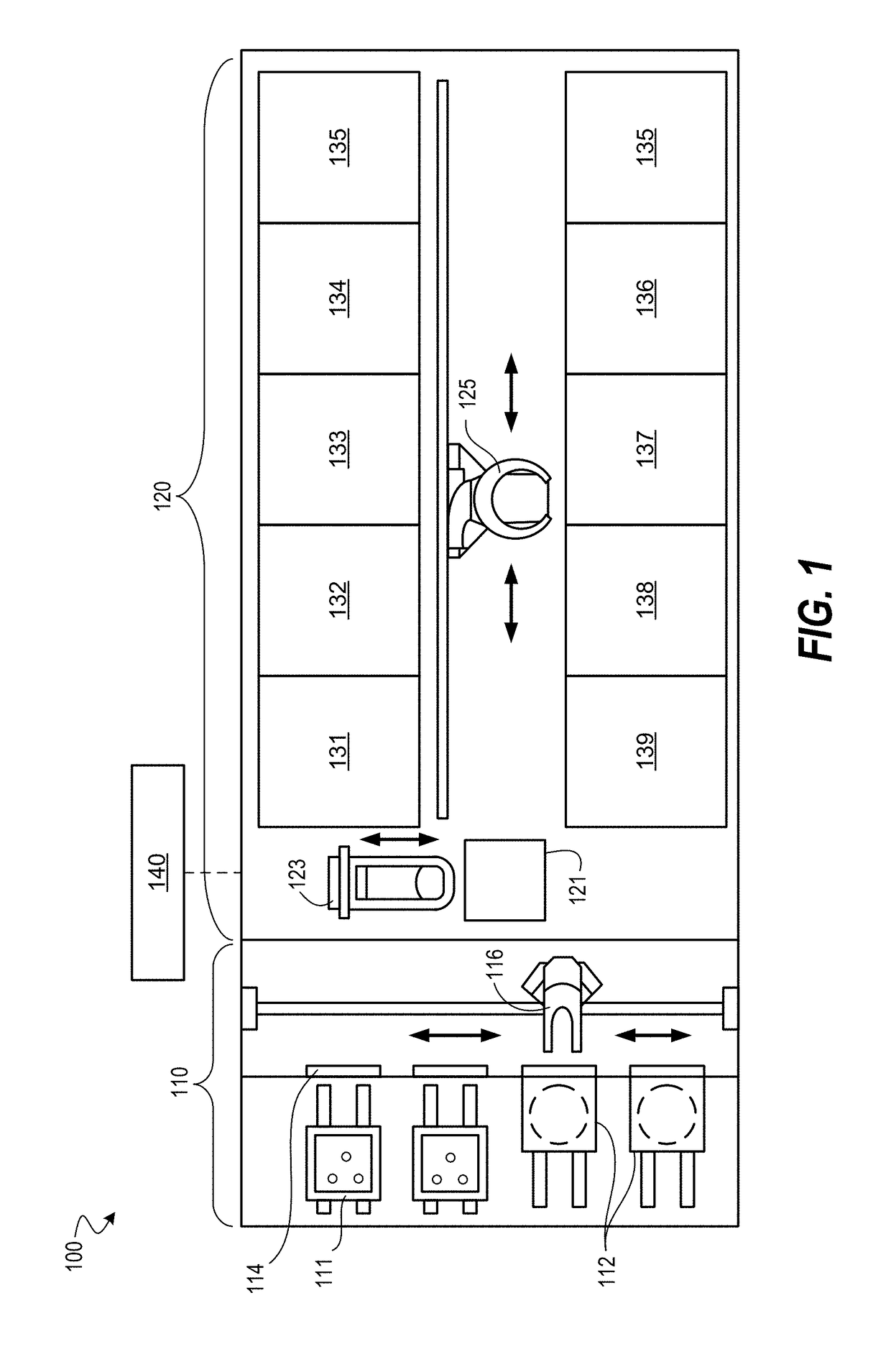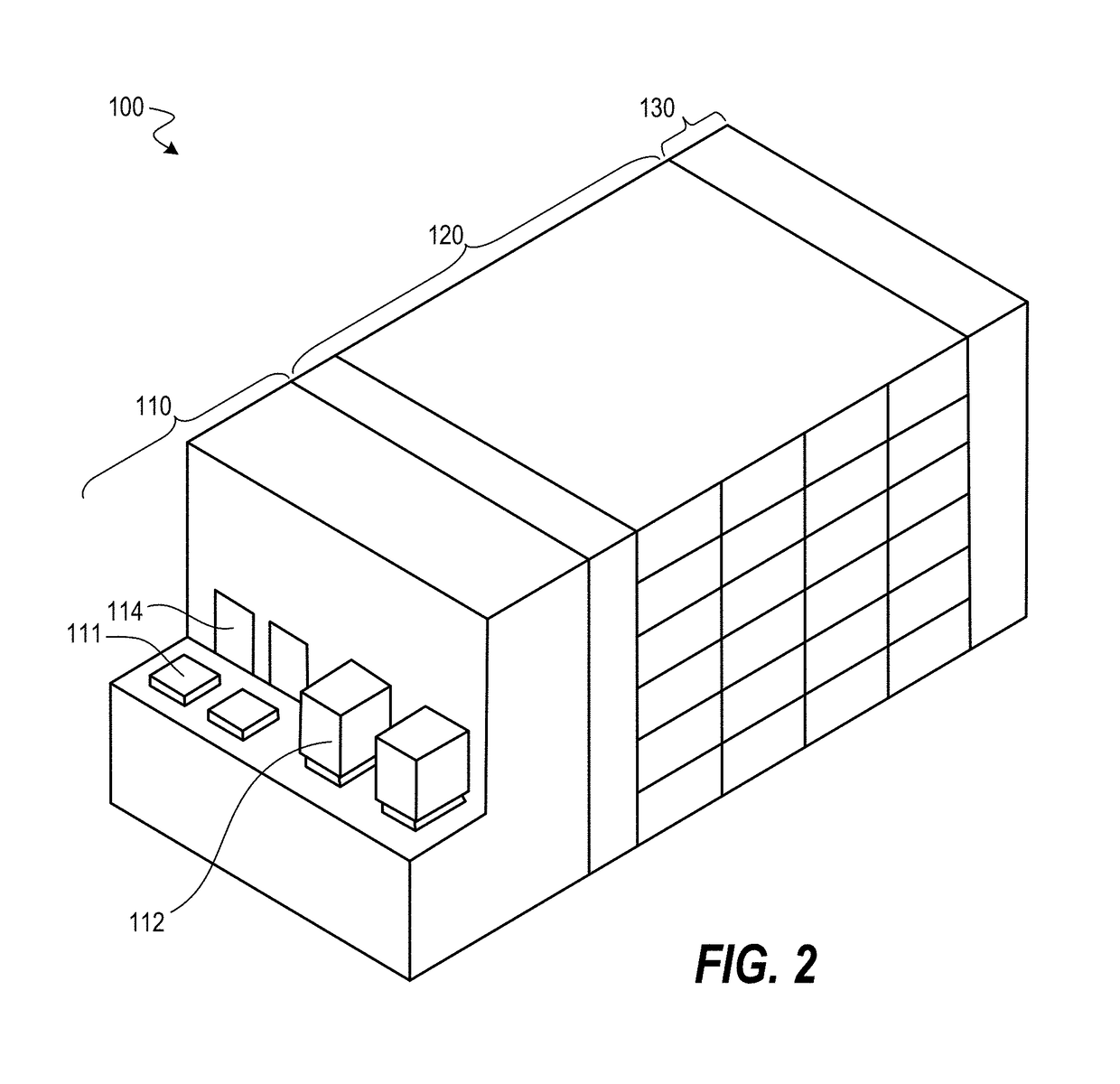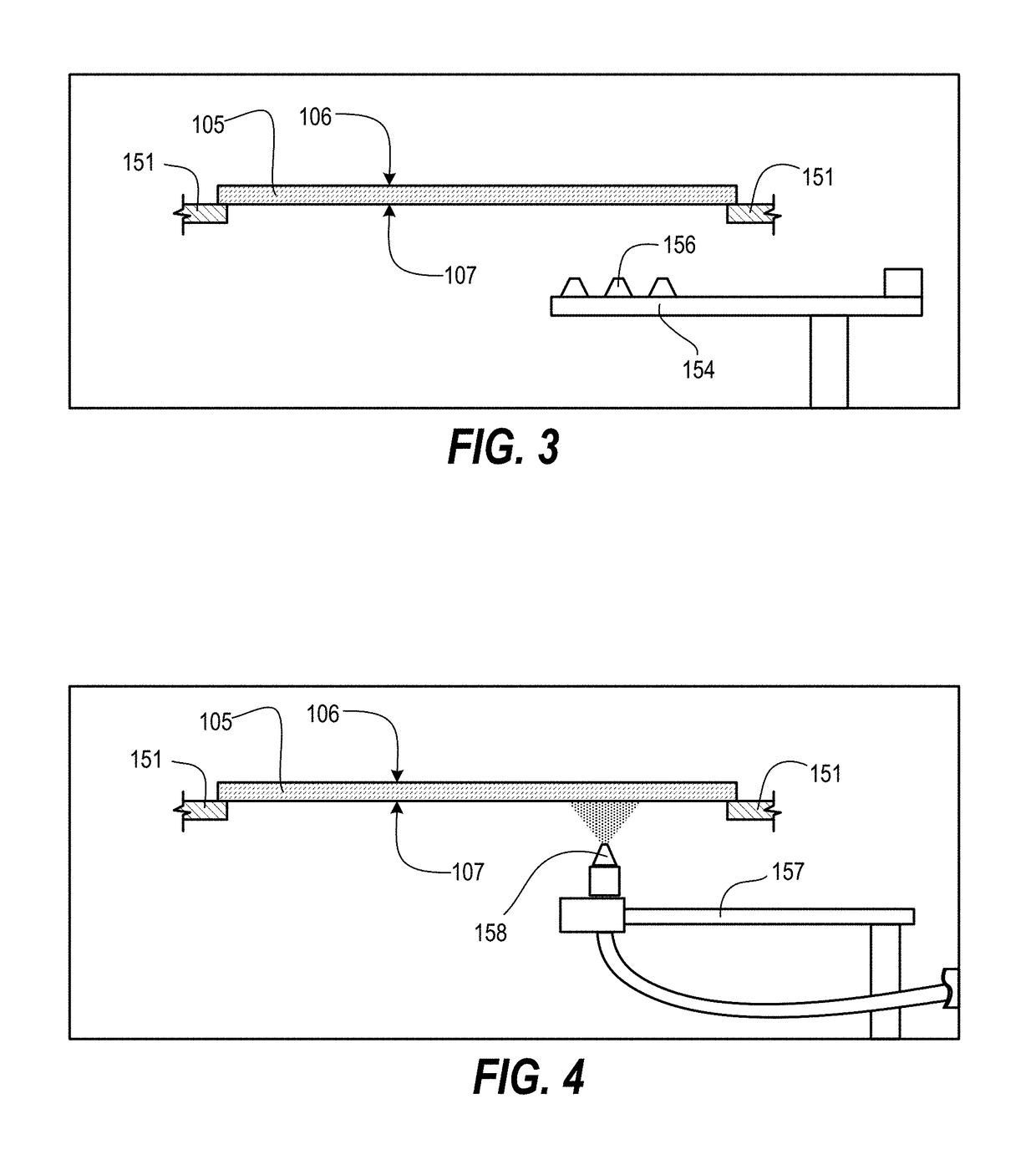Location-specific tuning of stress to control bow to control overlay in semiconductor processing
a technology of stress and location, applied in the direction of semiconductor/solid-state device testing/measurement, image enhancement, instruments, etc., can solve the problems of overlay errors, expansion exceeds overlay error tolerances, and larger overlay errors
- Summary
- Abstract
- Description
- Claims
- Application Information
AI Technical Summary
Benefits of technology
Problems solved by technology
Method used
Image
Examples
Embodiment Construction
[0030]Techniques herein include systems and methods for correcting pattern overlay errors by correcting or adjusting bowing of semiconductor substrates (wafers). Techniques herein include systems and methods for location-specific tuning of stress on wafers to reduce overlay error. Location-specific tuning of stress independently modifies specific regions, areas, or point locations on a substrate to change wafer bow at those specific locations. Such spatial stress tuning with differential control reduces overlay error on substrates, which in turn improves overlay of subsequent patterns created on the substrate. Techniques herein include receiving a substrate with some amount of overlay error, measuring bow of the substrate to map z-height deviations across the substrate, generating an overlay correction pattern, and then physically modifying internal stresses on the substrate at specific locations with these modifications and intensities being independent of other locations. Such mod...
PUM
| Property | Measurement | Unit |
|---|---|---|
| height deviation | aaaaa | aaaaa |
| diameter | aaaaa | aaaaa |
| z-height | aaaaa | aaaaa |
Abstract
Description
Claims
Application Information
 Login to View More
Login to View More - R&D
- Intellectual Property
- Life Sciences
- Materials
- Tech Scout
- Unparalleled Data Quality
- Higher Quality Content
- 60% Fewer Hallucinations
Browse by: Latest US Patents, China's latest patents, Technical Efficacy Thesaurus, Application Domain, Technology Topic, Popular Technical Reports.
© 2025 PatSnap. All rights reserved.Legal|Privacy policy|Modern Slavery Act Transparency Statement|Sitemap|About US| Contact US: help@patsnap.com



